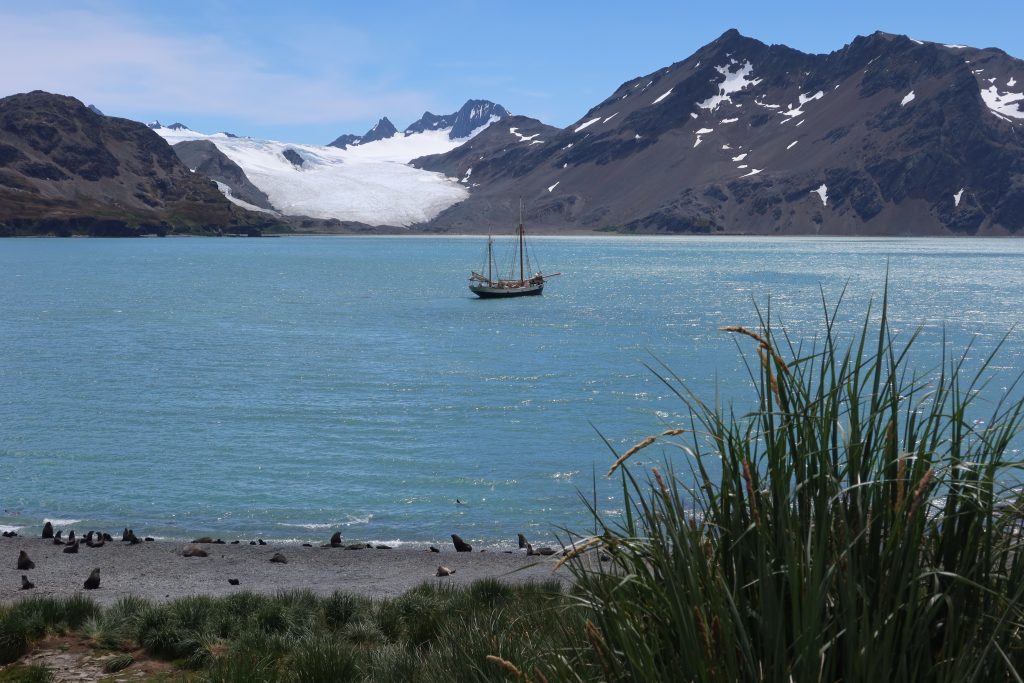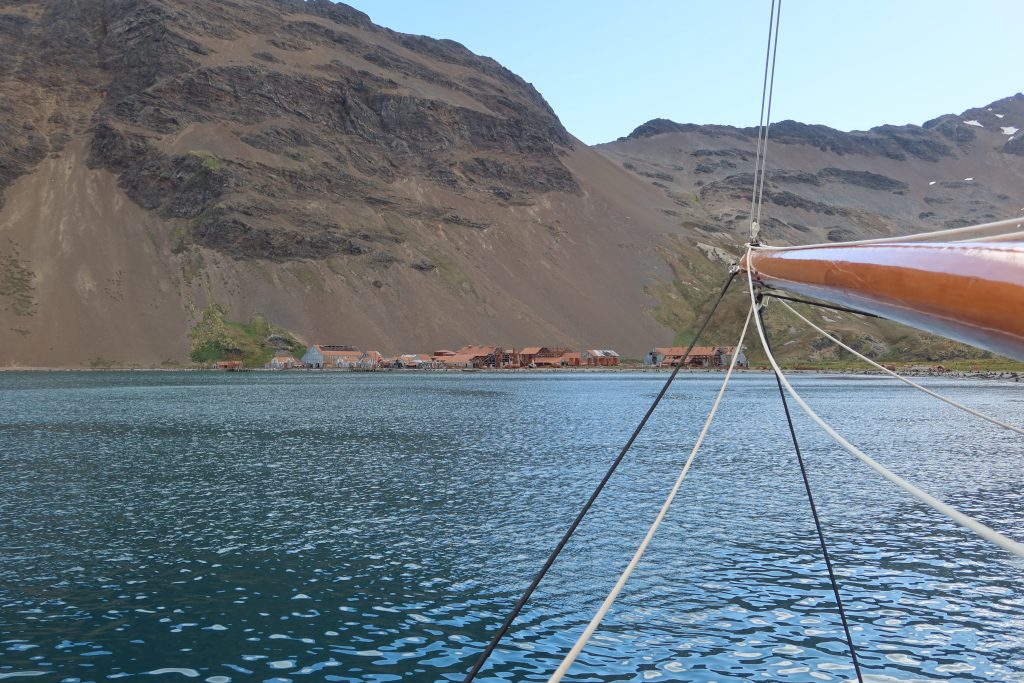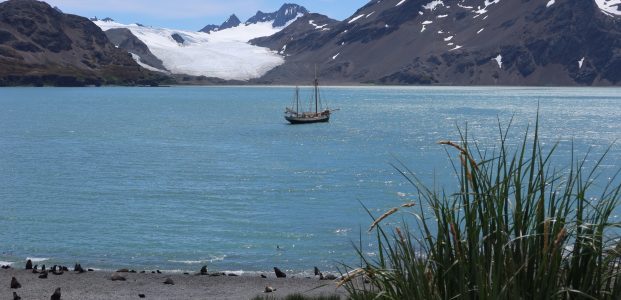We left Prince Olav’s Harbour shortly after breakfast and headed about ten miles round to Fortuna Bay. This route took us past some stunning glaciers, the most spectacular being the north-facing Fortuna Glacier just before we turned into the bay. Once in the bay we headed down to the south-eastern end to be dropped off to do what is known as the Shackleton Walk. This is something of a misnomer as Shackleton, Crean and Worlsey actually did 38km and we were just doing the final 6 kilometres. Not only that but it is the easiest 6 km!

Landing on the beach meant running the usual seal gauntlet, though this one was slightly easier and we got through unscathed. As ever a few were hidden in the grass as we walked up the first gully just to surprise us, but we avoided them and started climbing. The first section of the walk is a climb to around 300 metres. Once almost at the maximum height you some to the aptly named Crean Lake. The name comes from the fact that when Shackleton, Crean and Worlsey walked through here on May 20th 1916, Tom Crean broke through a layer of snow and ice and ended up waist deep in the lake. From there you head across what is almost a scree plain until the start of the descent into Stromness. Shackleton though didn’t want to risk the steep descent so they followed one of the rivers down wading through it until they hit a 15 metre drop. There they roped themselves down, ice climbing, until Stromness was finally easily accessible. The waterfall is, as a result, now known as Shackleton Falls. We took the easier route and followed a fairly well-travelled path (of sorts) down the side of the river and onto the plain below, heading along the river.


It is impossible to tell what it must have been like for three mal-nourished, dehydrated and incredibly tired explorers to arrive in Stromness. Their contact with the whalers there was the first contact they had had with the rest of the world in 17 months and even the manager, who Shackleton had met previously, didn’t recognise them. We trod in their footsteps in the most minor way, but as well-equipped modern travellers doing a minute fraction of what they did, it is at least possible to appreciate the scale of the achievement.
Just next door to Stromness whaling station is another called Leith. The bays here were particularly suitable for whaling operations as they shelved relatively steeply and this meant that they could build jetties and piers to accommodate the relatively large whaling ships. The first whaling licences for Leith were awarded to a Scottish company in 1909, but in 1960 operations were all but finished. A Japanese whaling company was given a five year lease to use the station in 1963, but they only operated until 1965 when whaling ended. The next occupiers of the station were Argentine troops in the 1982 conflict, but that was also a fairly short-lived stay. Since then it has gradually been reclaimed by the elements and the seals.

Because of the steeply shelving shore at Stromness and Leith we moved round the corner to another old whaling station – Husvik. Whaling began here in 1907 and initially they used a floating factory ship called the Bucentaur. However, this was quite wasteful as many parts of the carcass were wasted and improvements came in 1912 with new regulations from the Falkland Islands government who said that all parts of the whale had to be processed. This mean that the stations were actually much more productive. For example, in 1913-14 Stromness produced the same quantity of oil from 442 whales as the factory ship had produced from 912 whales a couple of years earlier. In 1931 world whale oil prices collapsed and this meant that operations at Husvik were no longer profitable. It did start up again after World War II when prices recovered but only survived until around 1960 when it was finally shut down.

